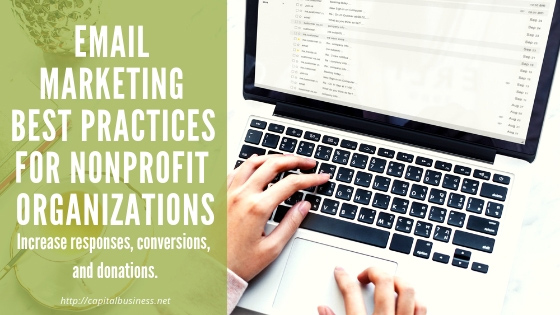Email Marketing for Nonprofits
Email marketing for nonprofits isn’t as complicated as people think, but if your nonprofit’s email marketing isn’t getting the responses, conversions, or donations that you’re looking for, you’re not alone.
We’re sharing some email marketing best practices that you should follow to maximize your conversions, increase responses, and secure more donations.
Nonprofit Email Marketing Best Practices
1. Perfect Your Subject Line
People will read your email’s subject line before anything else so it’s important to make sure it entices them to open the email. There are a few ways to create an enticing subject line:
- Create urgency. Statements that create urgency can compel your readers to take action. Use this only when it’s appropriate, though. Don’t create urgency with every email you send.
Spark their curiosity. Using subject lines like, “Want to know how we helped ABC Elementary read more books in 2018?” or “Learn how we donated more coats than ever this winter” will pique curiosity and inspire them to click. Just don’t confuse sparking curiosity with click bait. - Personalization.Personalized subject lines have been shown to result in 22.2% higher click-through rates than generic subject lines. Personalization can take many forms but the most common is adding the recipient’s name to the subject line. Something as simple as, “Jim, you only have 1 more day to donate” can easily increase your open rate.
- Keep it short. While it’s hard to find a definitive answer for how long an email subject line should be, the consensus is that ~60 characters is ideal. Some experts recommend much shorter lines (as short as 20 characters) while others say you can go as long as 75 or 80. One thing is for sure, though: email marketing best practices say shorter is better to prevent it from getting cut off on smaller screens like phones or tablets.
2. Keep Your Email Design Simple
It may be tempting to overdesign your emails but in doing so, you risk it being confusing or looking more like an ad. People don’t respond to ads, they respond to other people.
Resist the urge to dress up your emails with excessive HTML, graphics, gifs, etc. Instead, keep it simple and make it look like an email from an actual person, not a company.
3. Add a Personalized Greeting
Email marketing best practices say it’s always a good idea to add a personalized greeting to your emails. For the same reason personalizing a subject line is effective, starting an email with, “Hi Susan,” will result in more conversions than a generic greeting like, “Hello Donor.”
Most email marketing services allow you to populate fields automatically in the email body, including the first name. Adding this is an easy way to up your responses and conversions!
4. Make Your Message About Your Reader
A common mistake in email marketing, especially fundraising emails, is making your entire message about your organization. Instead, make it about your reader and those that you serve.
5. Explain Your Cause Before Asking for a Donation
This goes hand-in-hand with the previous point. Make sure you’ve explained why you’re seeking donations and where the money will go. Asking for a donation in the first paragraph is setting yourself up for failure. Tell your readers why they should donate to your organization or cause, where their funds will go, and who will be impacted by their donation. People feel more comfortable opening their wallets when they know where their money is going.
6. Keep It Short
The length of your message is key. No one wants to read a five-paragraph email but a one-paragraph email will not contain all the information you need to get your message across.
Most email marketing experts say your emails should be 3 short paragraphs, right around 200 words total. (For reference, points 4, 5, and 6 in this post are a total of 189 words.)
7. Be Specific With Your Call To Action
When it’s time to ask people to take action, whether that’s to donate, sign up, or something else entirely, be specific. Tell them exactly what to do.
For example, a button that says “Donate Now” is more effective than one that says, “Join Us In the Fight Against Illiteracy.” Joining the fight against illiteracy could mean a lot of things: donating money, donating books, volunteering, etc. “Donate Now” lets the user know exactly what you want them to do.
8. Make It Easy For Readers to Take Action
Once someone clicks your call to action, make it easy for them to complete that action. Your donation or sign-up page should be easy to navigate and follow through on. An increasingly common pitfall is requiring a user to create an account to donate or sign up for an event. From a user standpoint, this can be an inconvenience and can cause people to abandon the site (and their donation) altogether. Think of your user first and make the process simple.
9. Add Your Professional Signature
Don’t forget to add your professional signature to the end of your email. This is a trust signal to your recipients and makes it easy for them to find your contact information in case they want to reach out to you about the message.
Improve Your Nonprofit Email Marketing and Prepare to Accept More Donations
By following these nonprofit email marketing best practices, you will start to see a change in how your email fundraisers perform. MIP Fund Accounting® software can help you simplify and organize the donations your nonprofit organization receives. Request more information on Grant Management by calling us at (919) 821-1244 or filling out the form below.
